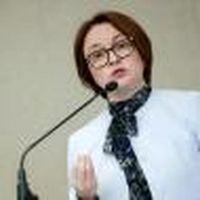Elvira Nabiullina, the head of the Bank of Russia, recently stated that the Russian economy is on a trajectory of a "soft landing." This announcement came during a press conference following the Central Bank's decision to maintain the key rate at 21%. Nabiullina explained that current rates of price growth are gradually slowing down, largely due to tight monetary policy. Additionally, she noted that improved market sentiment and the strengthening of the ruble have helped reduce inflation.
However, the inflationary atmosphere remains challenging, as price pressure is still considered high, requiring the continuation of strict monetary conditions for an extended period. The Bank of Russia aims to bring inflation down to 4% by 2026, a target that hinges on the speed and stability of current reductions in inflation rates.
As Nabiullina elaborated, “Our future decisions will depend on the speed and sustainability of the reduction of inflation towards the 4% target in 2026.” She indicated that if the required levels of speed and sustainability are not achieved, the central bank may consider increasing the key rate again, although the likelihood of this scenario has diminished.
The Central Bank's assessments indicate a moderate slowdown in domestic demand. This downturn is coupled with a gradual decrease in labor market tension, suggesting a growing comfort level among employers in finding qualified personnel. Nabiullina remarked, “Signs of moderate slowdown in domestic demand and a gradual decrease in tension in the labor market indicate that the economy is mostly on the path of a soft landing, with no sharp fluctuations.”
Looking toward the foreign exchange market, Nabiullina pointed out that the situation is heavily reliant on external conditions, which remain under a cloud of "increased uncertainty." “We see that expectations and sentiment among financial market participants are influenced by a reassessment of potential improvements in the geopolitical situation,” she explained. Despite this, the Central Bank's policies are focused on stable trends and solid fundamentals, while also considering potential risks inherently.
Nabiullina emphasized the critical importance of maintaining a conservative approach to risk assessment to confidently aim for the inflation target of 4% by 2026, regardless of external developments. “The current nature of inflation necessitates a prolonged period of maintaining strict monetary conditions,” she said. If raising the key interest rate becomes necessary to meet inflation targets, she assured that the Central Bank stands ready to act, though she reiterated that such a need is less likely now.
The Central Bank also addressed the topic of unscheduled meetings, with Nabiullina noting that they do not announce these in advance. “Unscheduled meetings are indeed unscheduled for a reason, and there’s probably nothing more to add to that. We don’t foresee any prerequisites for an unscheduled meeting in the near future,” she concluded.
In summary, while there are encouraging signs of economic stabilization, Nabiullina's remarks reflect a cautious optimism tempered by the realities of ongoing inflationary pressures and the necessity of vigilant monetary policy.

